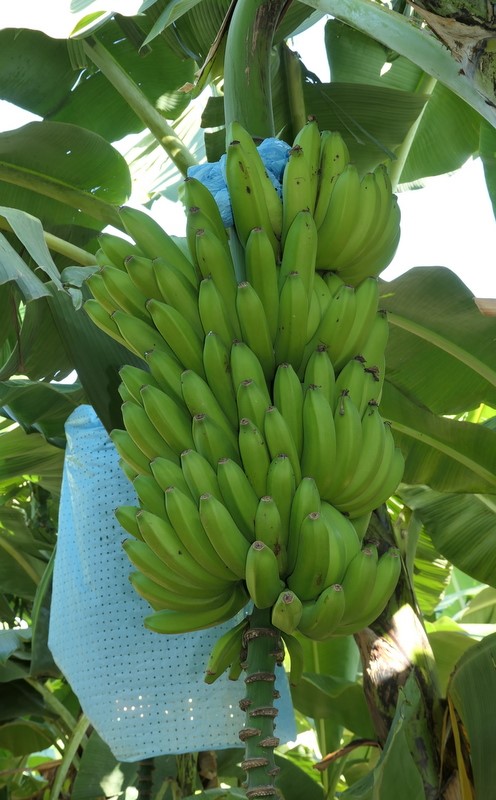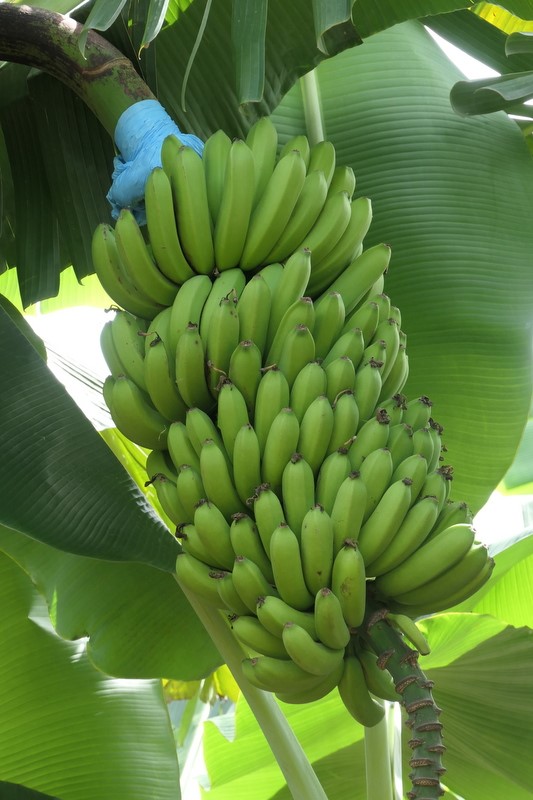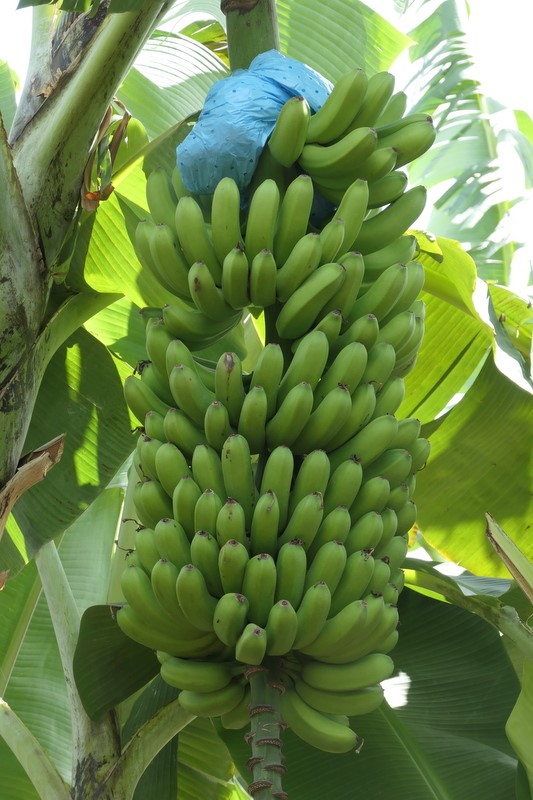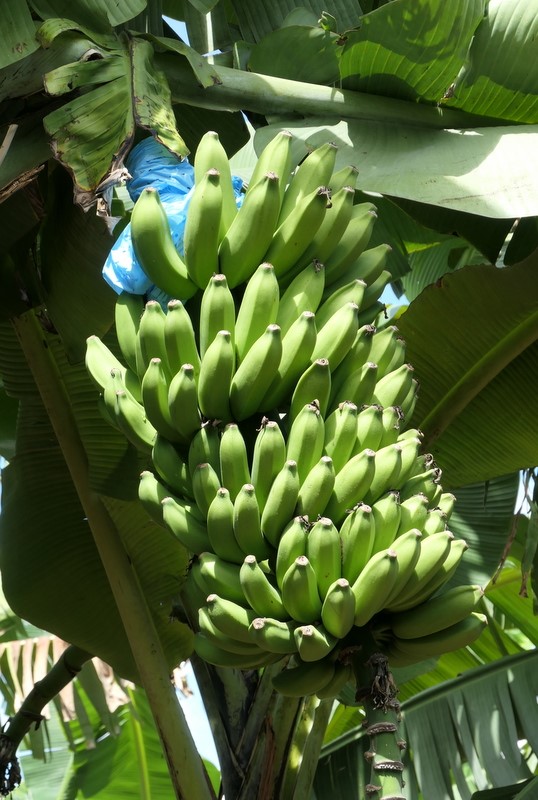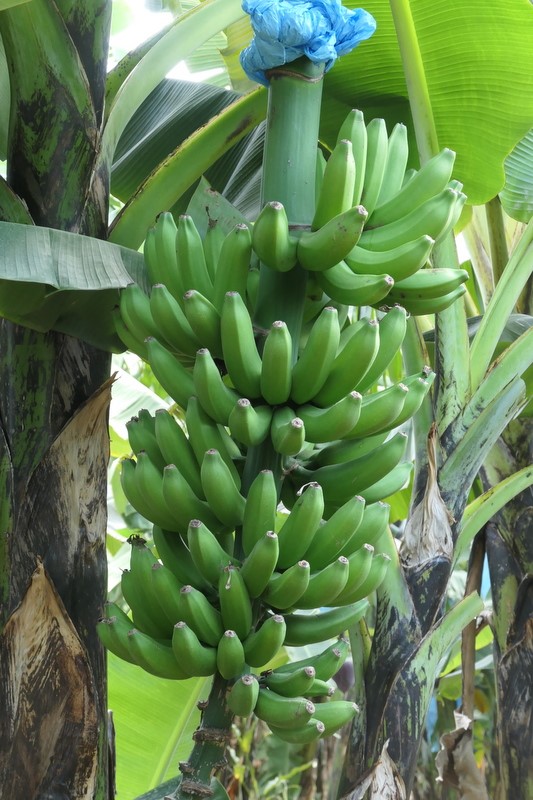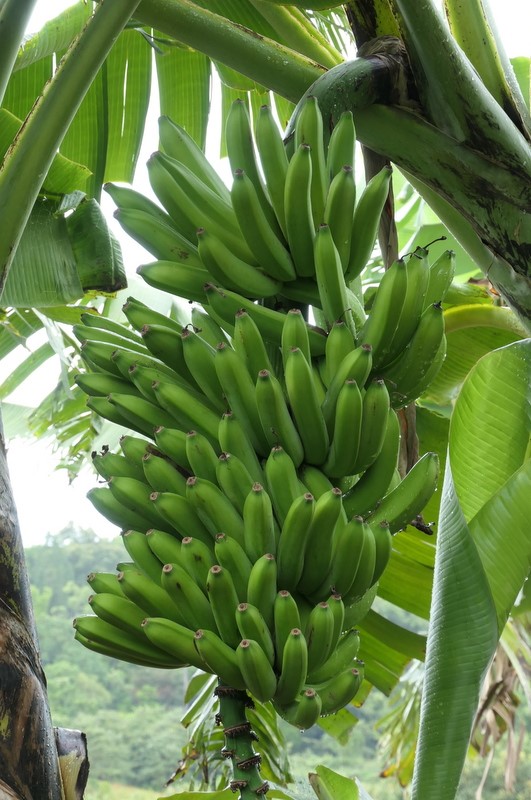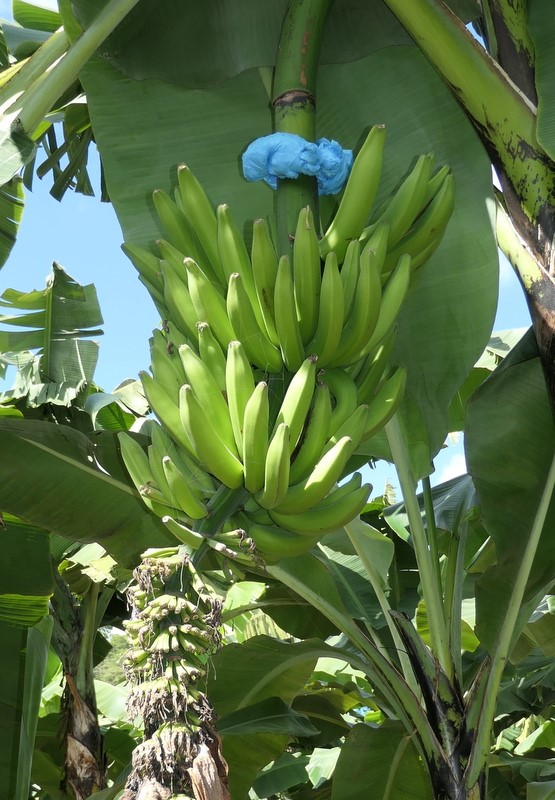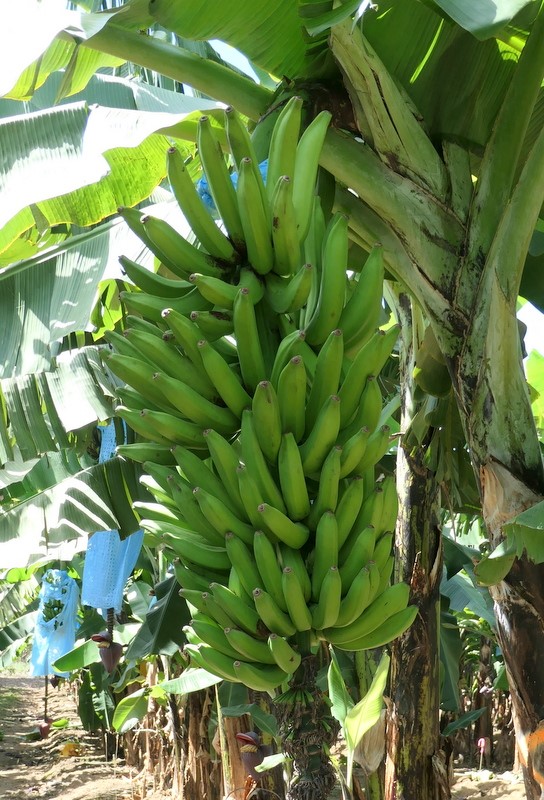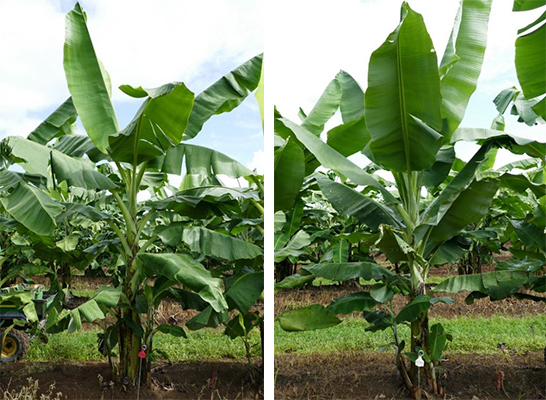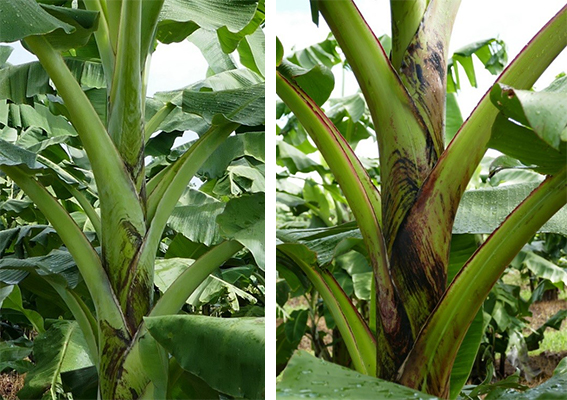630 irradiated Goldfinger plants were sent to South Johnstone Research Station, in two batches during June and August 2017 where they were held in the glasshouse prior to planting.
They were planted in the field in September and November 2017 respectively. Goldfinger plants which hadn’t been irradiated were also planted as control plants to compare against.
Irradiated plants in the field showed considerable variation in vegetative characteristics. This variation is mostly related to degree of dwarfness/plant height, pigmentation of pseudostem/leaf stalk and midribs, leaf uprightness/droopiness and minor leaf deformities. Also some of the irradiated plants have gross plant/leaf deformities and extremely slow growth. About 13% of the irradiated plants were in this reject category.
Harvest of both the September and November 2017 plantings were completed by the end of 2018. The photos below show the very large range in bunch and fruit characteristics which have been obtained by irradiation. Yes they have all come out of Goldfinger!
Postharvest assessments also revealed diversity in the eating quality of the Goldfinger variants. Several had qualities considered to be ‘improved’ and ‘better’ than the standard Goldfinger, including increased sweetness and firmness. Taste-testing sessions held amongst the staff at the research station were used to gauge consumer acceptance of these variants.
Twenty better tasting Goldfinger variants, which rated highly in the agronomic and post-harvest assessments were selected for a second stage of testing.



